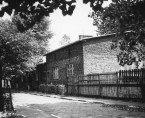- Museum
-
History
- Home Page - History
- Before the extermination
- Auschwitz I
- Auschwitz II-Birkenau
- Auschwitz III-Monowitz
-
Auschwitz sub-camps
- Altdorf
- Althammer
- Babitz
- Birkenau
- Bismarckhütte
- Blechhammer
- Bobrek
- Brünn
- Budy
- Charlottegrube
- Chelmek
- Eintrachthütte
- Freudenthal
- Fürstengrube
- Gleiwitz I
- Gleiwitz II
- Gleiwitz III
- Gleiwitz IV
- Golleschau
- Günthergrube
- Harmense
- Hindenburg
- Hubertshütte
- Janinagrube
- Jawischowitz
- Kobier
- Lagischa
- Laurahütte
- Lichtewerden
- Mesersitz
- Monowitz
- Neu-Dachs
- Neustadt
- Plawy
- Radostowitz
- Raisko
- Sonderkommando Kattowitz
- Sosnowitz (I)
- Sosnowitz (II)
- Sośnica
- SS Bauzug
- SS Hütte Porombka
- Trzebinia
- Tschechowitz (I)
- Tschechowitz (II)
- Auschwitz and Shoah
- Categories of prisoners
- Prisoner classification
- Fate of children
- Life in the camp
- Punishments and executions
- Camp hospitals
- Medical experiments
- Resistance
- Informing the world
- Evacuation
- Liberation
- The number of victims
- The SS garrison
- Holocaust denial
- Auschwitz Calendar
- Photo gallery
- Visiting
-
Education
- Home Page - Education
- Study visits
- Educational projects
- Conferences
- Thematic sessions
- Studies
-
Exhibitions
- Auschwitz, Memory, World
- Forbidden Art
- German Plans for Auschwitz Redevelopment
- June 14, 1940
- Leben? Oder Theatre? Charlotte Salomon 1917-1943
- Nazi German Death Camp Konzentrationslager Auschwitz
- People of Good Will
- Residents of Insurrectionary Warsaw
- So I am here kneeling down upon this Golgotha of modern times...
- The Liberation of KL Auschwitz
- The Memory of Auschwitz
- Traces of them remain
- Women at KL Auschwitz
- Visiting the Memorial
- E-learning
- Library - Online Catalogue
- Volunteer Bureau
- Resources for teachers
- ICEAH – General Information
- “Light of Remembrance”
- Contact
Sosnowitz (II)
A sub-camp at a rolling mill belonging to the Oberschlesiesche Maschinen u. Waggonfabrik in Sosnowiec. The first group of about 200 prisoners, almost all of them Jews, were taken there in May 1944 and quartered in a former camp for foreign conscript workers. Later, the population of the camp increased to 600 over the summer and almost 900 by the end of the year. They lived in three wooden barracks surrounded by an electrified barbed-wire fence with seven guard towers. There were also a kitchen, storehouse, washroom, and latrine inside the fence. The camp director was SS-Hauptscharführer Albin Vaupel.
The living conditions were somewhat better than in Birkenau and the work at the forging presses, stamping presses, lathes, the turning of gun barrels, and the production of artillery shells was relatively lighter. The worst work was on the forging presses where prisoners handling red-hot cannon parts, working in high temperatures, were at risk of burns because they had no protective clothing. The others, and especially the qualified machinists and lathe operators, performed work that did not demand such great physical effort.
In January 1945, the prisoners were evacuated on foot to Opava in Bohemia, from where they were taken by train to the Mauthausen camp.
